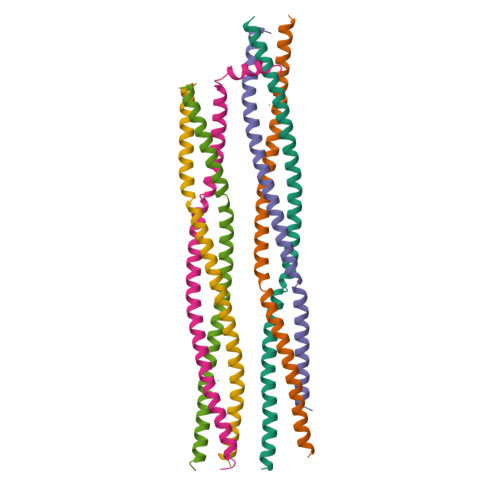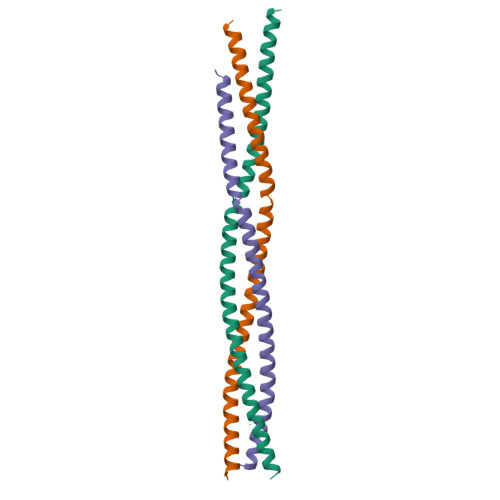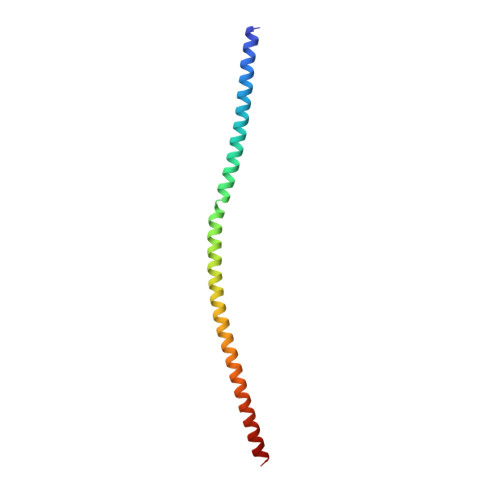Human LINE-1 retrotransposition requires a metastable coiled coil and a positively charged N-terminus in L1ORF1p.
Khazina, E., Weichenrieder, O.(2018) Elife 7
- PubMed: 29565245
- DOI: https://doi.org/10.7554/eLife.34960
- Primary Citation of Related Structures:
6FIA - PubMed Abstract:
LINE-1 (L1) is an autonomous retrotransposon, which acted throughout mammalian evolution and keeps contributing to human genotypic diversity, genetic disease and cancer. L1 encodes two essential proteins: L1ORF1p, a unique RNA-binding protein, and L1ORF2p, an endonuclease and reverse transcriptase. L1ORF1p contains an essential, but rapidly evolving N-terminal portion, homo-trimerizes via a coiled coil and packages L1RNA into large assemblies. Here, we determined crystal structures of the entire coiled coil domain of human L1ORF1p. We show that retrotransposition requires a non-ideal and metastable coiled coil structure, and a strongly basic L1ORF1p amino terminus. Human L1ORF1p therefore emerges as a highly calibrated molecular machine, sensitive to mutation but functional in different hosts. Our analysis rationalizes the locally rapid L1ORF1p sequence evolution and reveals striking mechanistic parallels to coiled coil-containing membrane fusion proteins. It also suggests how trimeric L1ORF1p could form larger meshworks and indicates critical novel steps in L1 retrotransposition.
Organizational Affiliation:
Department of Biochemistry, Max Planck Institute for Developmental Biology, Tübingen, Germany.




















